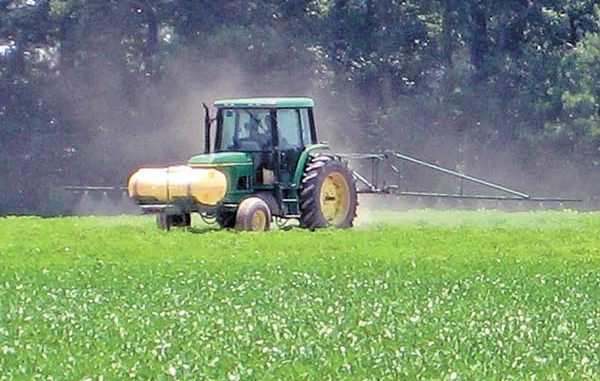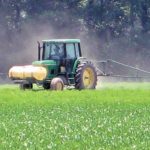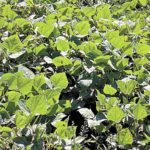
Food plots play an important role in the overall management regime for raising and attracting quality whitetail deer.
Summertime food plots provide supplemental nutrition for does nursing newborn fawns and for bucks growing big, heavy antlers. While fall plantings have their importance in the annual nutrient budget, summer food plots provide the nutrients when they are needed the most.
The spring and summer seasons bring many native browse species for deer to eat, but most tracts lack the abundance of native plants with the required nutrient composition during the critical time of need.
Generally speaking, the deer population in the Carolinas consistently contributes to over-browsing and the degradation of native vegetation. Without adequate food plots or nearby agriculture fields, deer populations would suffer.
“Well-managed summer food plots can offset the decreasing availability and palatability of native vegetation as summer transitions into fall,” said Joe Hamilton, Director of Education and Outreach for Quality Deer Management Association (QDMA).
Strategic summertime plantings provide the deer herd with the nutritious and protein-rich forage preferred for growing big healthy animals. Fortunately, spring and summer plantings play a double role. They sprout quickly, providing summertime feeding, and they flourish deep into the fall — just in time for bagging a trophy. Most summer plots continue to grow until the first frost usually in October or November.
When to plant?
Knowing when and what exactly to plant isn’t an exact science, but several factors will control the variables. For starters, the key time to plant depends upon the soil-temperature requirements of the seed. All summertime food-plot species essentially can be planted as soon as the soil temperature reaches 70 degrees, but everything else also starts to thrive, including weeds and invasive plants that will quickly take over and destroy a food plot.
Most spring plantings will germinate with soil temperatures ranging from 55 to 65 degrees.
“Although different seeds are much more ‘cold hardy’ than others, a key rule of thumb is not to plant anything until after the danger of your last frost has passed,” said Todd Amenrud of Mossy Oak’s BioLogic division.
Soil temperature is controlled by air temperature and solar exposure from soil hue. They can vary almost 10 degrees across different soil types within a single tract of land. The air temperature warms evenly, but the color of the soil is the variable. Dark, organic soils absorb solar heat quicker than light-colored soils, Amenrud said.
Deciding when to plant has its risks and rewards. Although April is consistent with adequate soil moisture and preferred soil temperature, a late-season frost is still possible, potentially crippling a newly planted crop. Historically, most farmers wait and plant their summer crops after Good Friday — roughly the middle of April.
“The best 4-week period to plant summer food plots is (from) the last two weeks of April through the first two weeks of May,” Hamilton said. “Getting summer food plots established before late May allows the roots systems to get a foot-hold in the soil to take advantage of the available soil moisture. Planting any later often results in extreme competition with grasses and other weeds.”
Timing is everything, but planting times are sometimes controlled by factors unrelated to physical climate conditions.
“In order to get full-season benefits, summer food plots should be planted as early as possible; however, April plantings may create an illegal baiting situation during the wild turkey season, “ said Charles Ruth, the deer-project manager for the S.C. Department of Natural Resources.
Ruth recommends planting during May because conditions are good, with abundant soil moisture, and because turkey season is over.
What to plant?
Choosing the right seed or seed mix is totally dependent on management objectives and site conditions. With the exception of corn at seven percent, all popular summertime food-plot mixes with components of legumes — including soybeans, peas, and peanuts — are loaded with highly-digestible protein from 15 to 30 percent. And even though corn is low in protein, it is loaded with carbohydrates. Although single-species plantings are okay, seed mixes are recommended to provide a diverse food source. In areas with high deer densities, single-crop plantings will quickly become overgrazed and prevent a full crop from forming.
Alternate corn and peanuts
Hugh McCrea of Big Woods Outfitters in Kingstree, S.C., has figured out what the deer prefer the most and what works best for him. Although he plants single crops, he plants in groups of consecutive rows with a dual-season purpose.
“During May, I plant eight rows of peanuts and eight rows of corn throughout all of our fields,” he said. “The corn serves as cover during the summer and doubles as a favored food and escape cover during the fall and winter. Peanut plants provides the deer with an immediate food source, from green up all the way to the first frost.”
Although peanuts themselves are known to provide a high protein content (28 percent), the peanut greens themselves provide 15 to 18 percent of highly-digestible protein that is often overlooked. Peanuts also contain 48-percent fat, providing deer with a high-energy food source. They also thrive in well drained, sandy soils and are drought tolerant.
“I provide them with their two favorite foods that start producing within just a few weeks just in time for antler development,” McCrea said.
‘Round-Up Ready’ seed mixes
Recent breakthroughs in genetic engineering have cured the nemesis of the amateur wildlifer’s food plots. Mossy Oak’s BioLogic division (www.mossyoakbiologic.com) has developed “Round-Up Ready” seed blends that are resistant to glyphosate treatments, the main ingredient in Round-Up herbicides.
After one month of growth, the entire plot can be sprayed with herbicide, killing off all unwanted weeds but leaving seedlings unharmed and free of competition. All of BioLogic’s seed mixes are composed of highly-nutritious wildlife foods favored by farm managers for their planting and acquaintance simplicity.
Two popular summertime mixes made by BioLogic are favored in the Carolinas: BioMaxx, a blend of two corns and three soybeans, and BioMass Legume Blend — iron and clay cow peas, lab lab, and soybeans. Both mixes boast a protein content from 15 to 30 percent.
Lab Lab in dry-acidic plots
The optimum location and conditions for a perfect food plot do not always come together as planned. In many areas of the coastal region, soils are excessively acidic and require an expensive limestone treatment to balance the pH of the soil in order for the food plot to grow. Luckily, in areas where acidic soils persist, and with soil moisture at a minimum, a highly nutritious legume especially formulated for these conditions is available to plant. Lab Lab, sold by Mossy Oak BioLogic and Tecomate (www.tecomate.com), is a vigorous climbing vine packed with large nutritious leaves that deer love. Lab Lab has a protein content of 15 to 30 percent and can grow two to three feet in length.






Be the first to comment